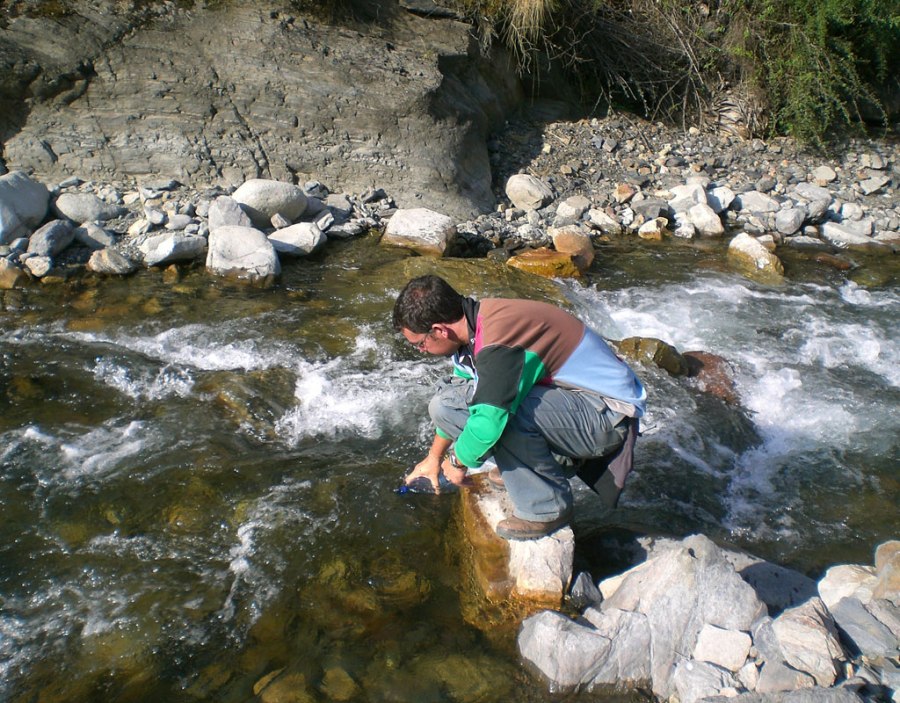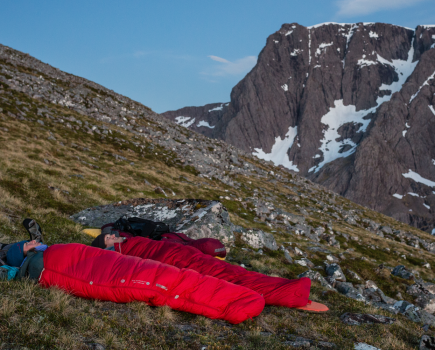In this excerpt from International Mountain Trekking, Helen Barnard looks at health concerns
A new book in the series from Mountain Training UK and written by the team from the Plas y Brenin called International Mountain Trekking covers every aspect of walking abroad. In this excerpt, Helen Barnard looks at health concerns.
Travelling abroad raises a number of issues. For many, the primary concern will be how to stay healthy, especially when deprived of all the modern trappings we are used to in the developed world, such as clean water, fresh food and good sanitation facilities. Seeking expert medical advice and treatment abroad when faced with illness or injury can be daunting, particularly when there is a language barrier to overcome. Good preparation and research beforehand can often prevent problems and help solve them more efficiently should they arise.
Medical care
The provision of medical care will vary from country to country. In some countries, hospitals and medical treatment will be provided by the state and in others it will be private. Some countries have a combination of the two. Medical expertise may vary and the patient may have to travel a considerable distance to receive specialist care. Before travelling, spend time researching the availability of medical care in the destination country. It is important that travel insurance for the trip reflects the level of risk and cost of medical care. The World Health Organisation (WHO) and the Foreign & Commonwealth Office (fco.gov.uk) are invaluable sources of information when planning any kind of overseas trip. Their websites are full of useful information for travellers.
Immunisations
It is recommended to consult a doctor or travel health professional for the latest information on immunisations. This should be done a minimum of six months before the start of the trip as some vaccines require several injections. The vaccines required will depend on the following:
• Existing vaccination status
• The countries to be visited
• The duration in contact with local people
• The standard of accommodation
• The anticipated activity
Some countries require vaccination certificates as entry requirements; check with the relevant embassy before travel.
Essential
• Tetanus
• Polio
• Typhoid
• Hepatitis A and B
Consider
• Diphtheria
• Yellow fever
• Japanese encephalitis
• Rabies
Malaria and dengue fever are diseases spread by the mosquito, so depending on your area of travel, preventative medication for these should also be
considered. Avoid getting bitten by using insect repellent every six hours and covering exposed flesh with clothing (they can still bite through light clothing). Use mosquito nets and insect spray at night and avoid areas where they breed, such as stagnant water.
Travelling with medication
A medical check-up is a vital part of the preparation for a trekking trip, especially if travelling to altitude. This is even more relevant for individuals with pre-existing
medical conditions, such as diabetes or asthma. If medication is required, then it is important to ensure that an adequate supply is available for the duration of the trip, plus extra as contingency. Check that the medication is not one of the controlled drugs in the country you are visiting. In many countries, carrying drugs and painkillers may cause legal problems that could result in a prison sentence or worse. Carry copies of prescriptions and a letter from the doctor detailing any medication. Additional advice and permission from the embassy may also help.
Cold
The majority of cold injuries can be avoided with the correct clothing, equipment, plus adequate food and drink. When travelling to a cold climate it is important to be familiar with the signs and symptoms of any cold related ailment encountered. In the context of trekking, symptoms of hypothermia, dehydration, low blood sugar level, brain injury, alcohol poisoning and altitude related illnesses are all very similar. Therefore it is important to check all possibilities and consider past history and the environment when making a diagnosis.
Hypothermia
The normal core body temperature of a person is approximately 37°C and hypothermia occurs when this drops to below 35°C.
There are two types of hypothermia:
• Immersion hypothermia – a sudden drop of core temperature due to immersion in cold water.
• Exhaustion hypothermia – a slow and progressive drop in core temperature due to a combination of climatic conditions, insufficient or inappropriate clothing, lack of food and fluid, and physical exertion. It is likely due to the nature of trekking that exhaustion hypothermia is more common than immersion hypothermia. It is important that the symptoms of hypothermia are noticed in both those around you and in yourself. At high altitudes where the environment is cold and the days often arduous, preventing hypothermia can be a real challenge.
Frostbite
Frostbite is the localised freezing of skin tissue and the formation of ice crystals between the cells. This usually occurs in sub-zero temperatures, where the casualty has poor insulation, and usually affects the extremities including fingers, toes, nose and ear lobes. The risk of frostbite developing is increased by restrictive clothing, hypothermia, dehydration, exhaustion, and is particularly common at altitude. The injury can be superficial or deep. The more severe cases of the latter may lead to amputation of the limb. Initially the casualty usually complains of pain followed by the loss of sensation and a wooden feeling to the affected area. The immediate treatment for frostbite involves re-warming of the affected area. However this should only be attempted if it can be guaranteed not to re-freeze. Placing the affected area into a warm environment for approximately ten minutes and maintaining warmth by replacing wet items of clothing with dry ones will help to re-warm the affected areas. If there has been no recovery after this process, then severe frostbite should be suspected and specialist medical advice should be sought. People who have suffered from frostbite in the past often complain about being more susceptible to the cold than before. The British Frostbite Service provides excellent advice on the latest medical treatment of severe frostbite conditions via their website.
Frost-nip
Frost-nip is the superficial freezing of the skin tissue. Early identification is crucial as rapid re-warming, although painful at the time, will not lead to any permanent damage.
Heat
The daily temperature range encountered in many popular trekking destinations means that suffering from heat related problems is a real risk. The overnight temperatures may drop to freezing, but once the sun is up the daytime temperature can be extremely high leading to dehydration and hyperthermia. In humid environments these problems can be exacerbated. Such conditions can easily be avoided with careful planning. Early starts and early finishes, streams to refill water bottles, correct clothing and an appropriate route choice and distances will all help to reduce the risks.
Hyperthermia
An individual regulates their heat in a number of ways:
• Vasodilatation – increasing blood flow to the skin.
• Sweating – the evaporation of water from the skin.
• Behaviour – the removal of clothing or heat source.
Heat exhaustion
The symptoms of heat exhaustion include headaches, fatigue, muscular cramps, thirst and nausea. The treatment is simple and effective through the removal of heat by seeking shade, fanning and the removal of clothes plus the replacement
of essential water, salts and electrolytes through oral rehydration sachets. A balanced diet may be difficult to achieve on a trek. Where possible, a third of the meal should consist of starchy foods such as pasta, rice and potatoes. The body converts these complex carbohydrates into glycogen to provide energy, thereby delaying the onset of exhaustion. It is important to avoid sugary foods and drinks as they release energy too quickly. A sudden rise in sugar levels leads to over-production of insulin and is followed by a rapid reduction in blood sugar level.
Heatstroke
Heat stroke is a more serious condition, where the body’s ability to control heat has failed and the body’s core temperature has risen above 41°C. The skin is hot and dry to touch. The increasing rise in temperature will result in further damage and there is a significant loss of the casualty’s level of consciousness. Urgent evacuation of the casualty is required along with immediate surface cooling.
Sun burn
At high altitude there are increased risks of skin damage through ultraviolet radiation from the sun. The intensity of the UV radiation is increased in snow-covered ground and any reflective terrain such as water, light rocks and boulders. Consider using a high factor sunscreen (SPF 25 or greater) and ensure that particular attention is paid to lips, nose and ears. Try to cover up with sensible clothing and hats.







